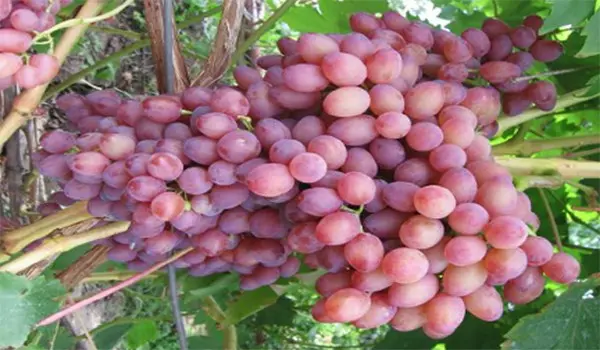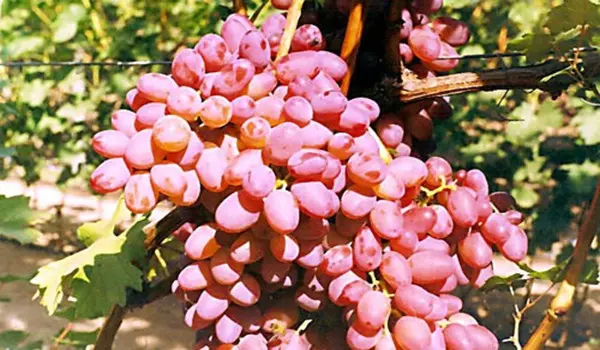Kishmish is a medium-sized sweet seedless grape. It is used everywhere for food due to the complete absence of seeds and soft skin, suitable for eating, high sugar content. Dried products from this plant are also called “kishmish”.
This variety produces small and very sweet raisins, dark or light in color. Dried berries, when properly dried, contain vitamins and minerals in a concentrated form, therefore it is good for health. It is used in the production of confectionery: muffins, cakes, pastries. Dried kishmish consists mainly of carbohydrates, therefore it has a high calorie content.

Variety description
The hybrid form of raisins is obtained by crossing two species. Suitable for making raisins and eating grapes kishmish find. This table grape has an early ripening period. Already in the first half of August, the berries are ripe enough for harvesting. The high yield makes the Nakhodka variety attractive for cultivation: more than 6 kilograms per bush with proper care, not excessive fertilizer and timely pruning. Withstands winter temperatures down to -23 ° C, that is, it is quite frost-resistant.
Resistant also to mildew, gray rot; to a lesser extent – to oidium. With excessive use of fertilizers, the bushes increase significantly in size, but lose their taste and useful qualities. The bush must be cut, it does not tolerate excessive load.
The maximum load on the plant is up to 40 eyes. Pruning eyes – for 9-10 pieces. Plant cuttings take root quickly.
Features
After bud break and until the berries are fully ripe, it takes from 116 to 125 days. Shoots find a fairly large force of growth, the vine matures to 2/3 of its length. If the air temperature is not abnormally low, then flowering begins in early June.
The sugar content of grapes is high, reaching 22%; acidity 5–7 g/l. The berries of the kishmish nakhodka variety are even, elongated, rather large, and have a high density. The bunch reaches 1500 grams in weight, the average weight is 700-800 grams. The grape itself weighs 4–5 grams, which is quite a lot of weight for sultanas.

The berries do not have seeds, the flesh is sweet, pink in color, with a pronounced nutmeg flavor. The skin is loose, thin. A bunch of grapes has an attractive presentation, the berries are even, located close to each other.
Video “Grape Kishmish Nakhodka”
The video briefly tells about the differences between the Nakhodka variety and other raisin berries. How big is the bunch, and what is the characteristic color for the berries.









